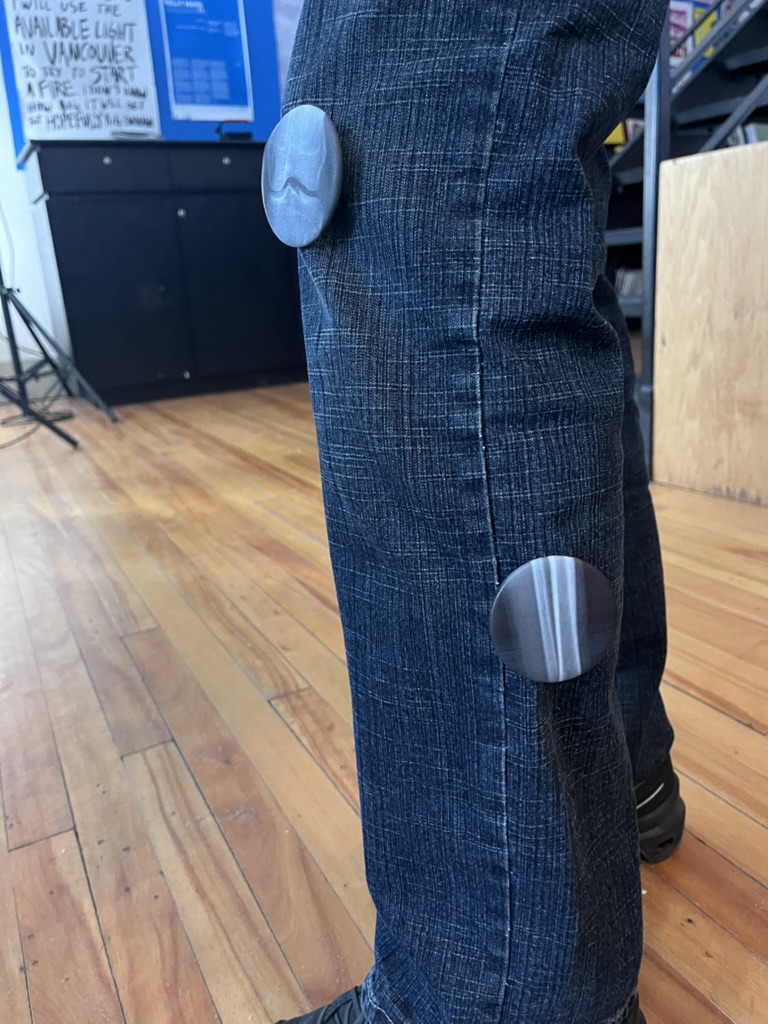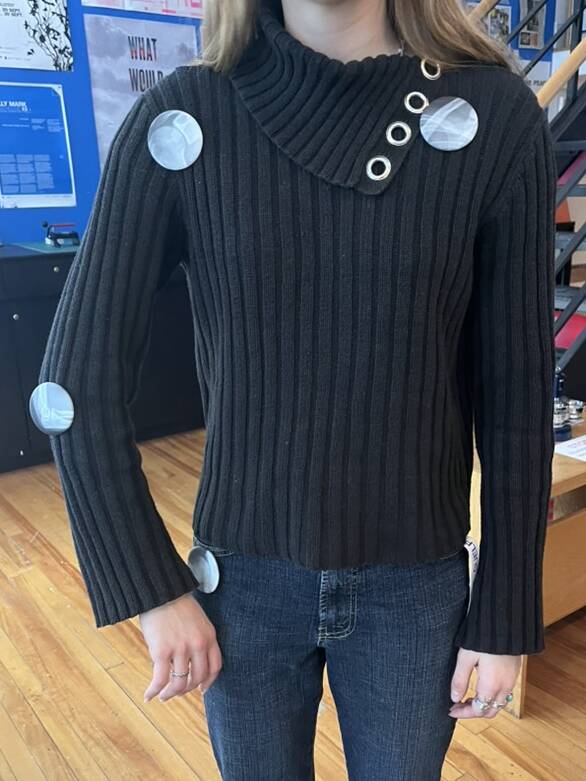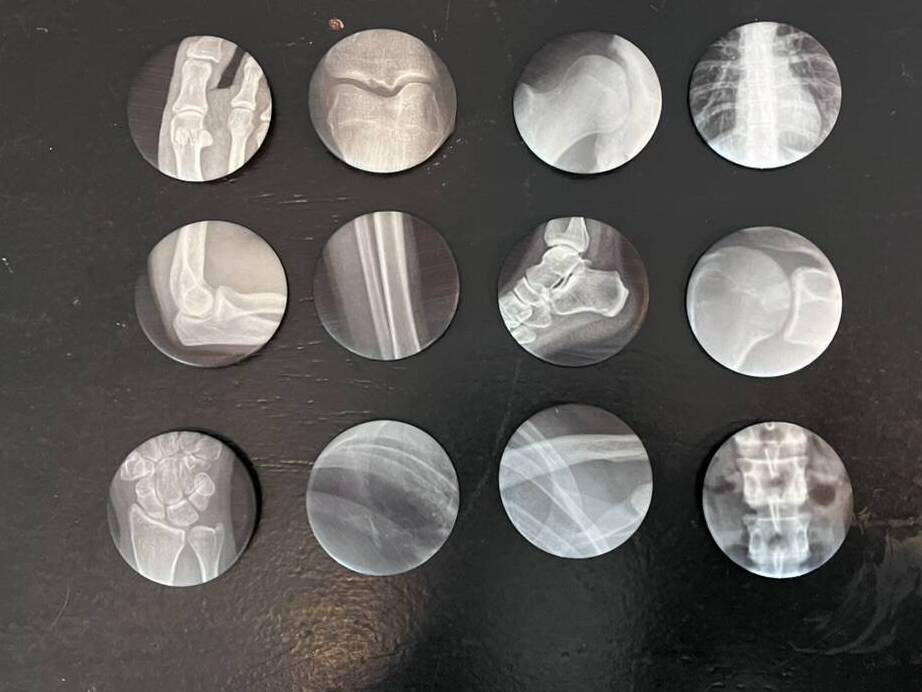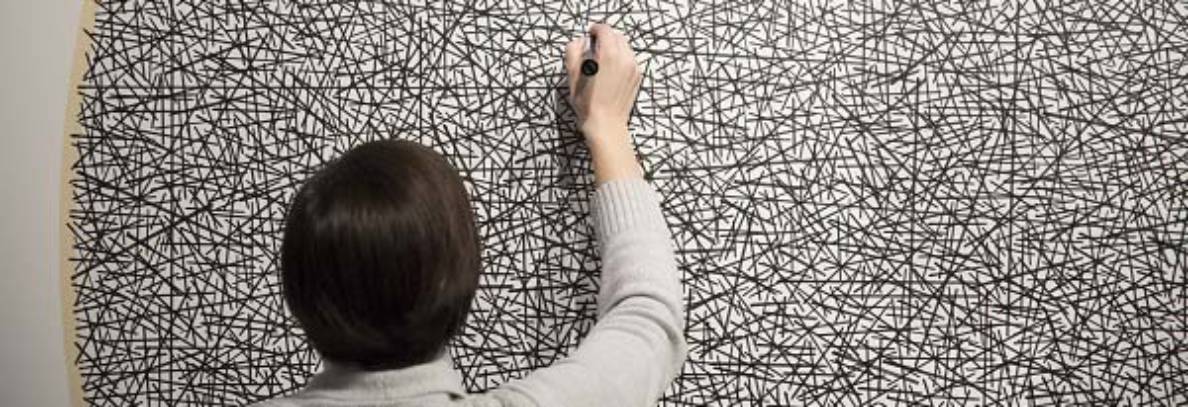Kilometre Project
For my kilometre, I chose to show a kilometre of words. I used pages from a book called “around the world in 80 dates”, because I wanted it to have a travel theme. I measured the length of each line for many ‘normal’ looking pages and averaged them out to count for all normal-looking pages. For any pages that weren’t average looking, I counted them and added them to the total, until all of the words in the pages would stretch to reach 1 km in length. The sticky notes show some of my calculations.
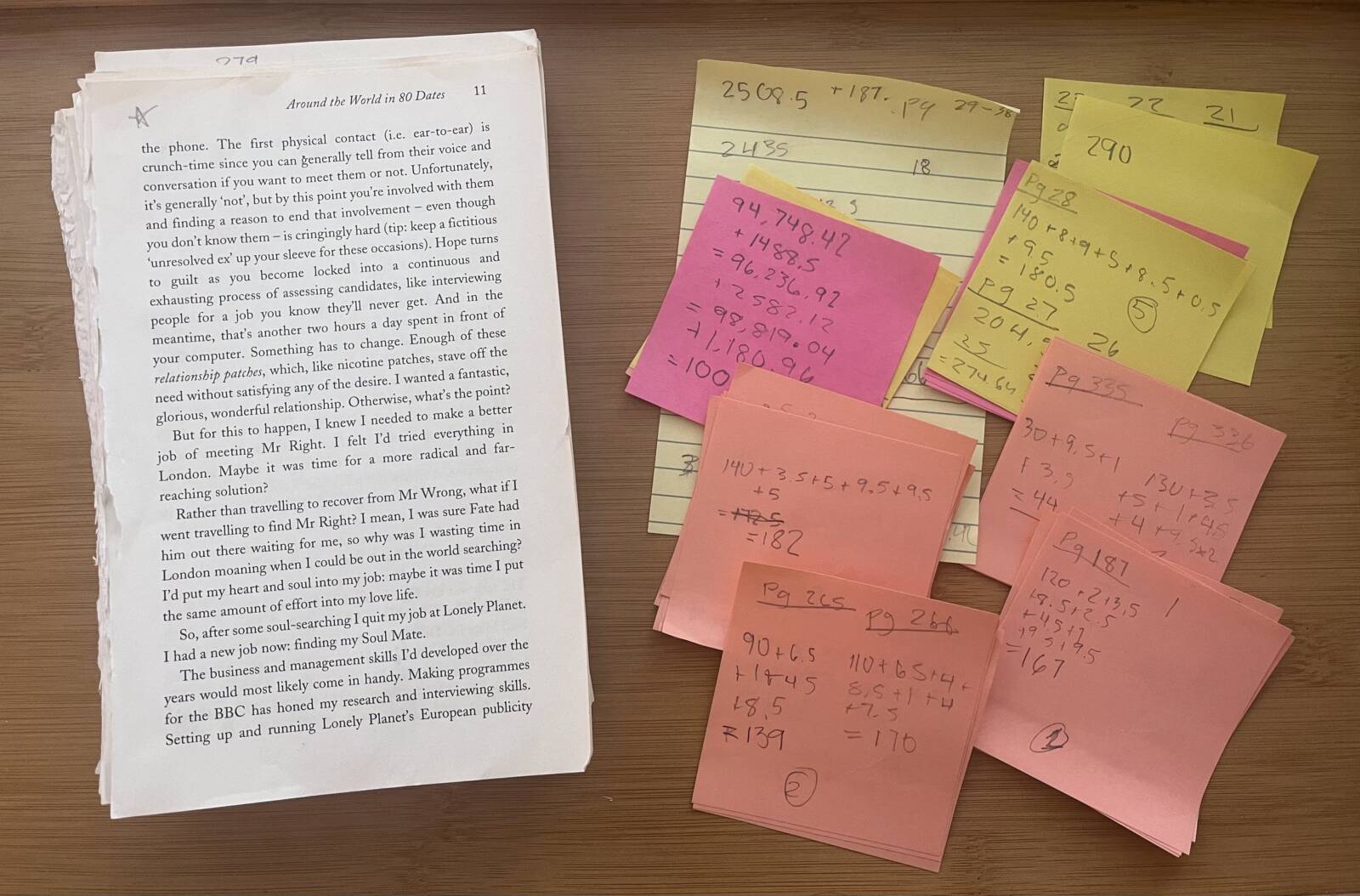

NYT Dance Article
- Describe the work discussed in the article and the unique challenges – as well as the unique gifts- that come with attempting to archive personal movements?
One of the challenges that can happen with archiving personal movements is in the interview process itself, when individuals want to pt forward the best version of themselves, but really its just important that they be themselves so that the dancers can observe them. But it comes with so many rewards, including the individuals who ‘donate’ their movement learning things about themselves. Another really interesting part is the significance it can have for individuals dealing with loss, and how it can serve as a goodbye and almost a memorization of movements of someone that they’ve lost.
2. Discuss one or two examples of movements in the article – what strikes you about them?
Some of the movements in the article that stood out to me were the ones that are specific to certain expressions, like pain (wincing), ecstasy (dancing) and terror (paralysis). I find these so interesting because they’re so common, and yet everyone has a different way of doing them. Of course, there’ll be little gestures that are so personal to each individual, but i find it so interesting to think about these sorts of expressions which are common, but still different in each person.
3. Describe the habitual movements/unconscious gestures, tics etc. of 3 people you know well. How do individual body parts move, and how does the whole body interact? What about facial expressions, and emotional valence of the movement? How does body type inform the movement? What do these examples of small movements mean and imply?
One of my roommates has an interesting unconscious gesture that she does where she twirls pieces of her hair and then pinches all down the length of the hair. This is usually accompanied by a sort of bored or indifferent facial expression, and I believe that she does it unconsciously when she is focused on something. Another great example is my friend who twirls her rings when she is bored/anxious or just waiting for something. It’s almost like a nervous tick, and she says she doesn’t even realize she’s doing it. Also, my boyfriend tends to sing, hum and generally make noises when he’s bored or anxious. I think it’s interesting to think of all of these gestures together as different ways that people respond to boredom or anxiety, and realize that everyone’s responses are so different to the same feelings.
Gallery Field Trip
During the field trip to Toronto, there were so many interesting pieces at the AGO and at The Power Plant! In hip-hop and contemporary art exhibition I loved the piece of video art by Nicholas Galanin entitled Tsu Héidel Shugaxtutaan 1. This piece included a dancer performing incredibly fluid movements in a simple room with white walls. I found his movements to be quite mesmerizing and just so interesting to watch, as someone who is very interested in dance. Another piece in this exhibit that I really enjoyed was by Jayson Musson, entitled Knowledge God. This was a massive textile piece with intertwining colours, patterns and textures that I felt like I could stare at for hours. I loved their use of colour and its definitely something I am going to take inspiration from to use in my own work.
At the Power Plant, I loved the work by Charles Campbell entitled, How Many Colours Has The Sea, which included a large-scale sculpture that is inspired by the measurement of the depth of the Atlantic ocean. This sculpture was massive in size and positioned in the middle of the space, forcing your attention. It was really cool the way it was hung so that you could walk under it and view it from many different angles. The artist also included these really interesting colour panels on the walls which blended different colours in a really interesting way, and added to the ambience of the entire space.
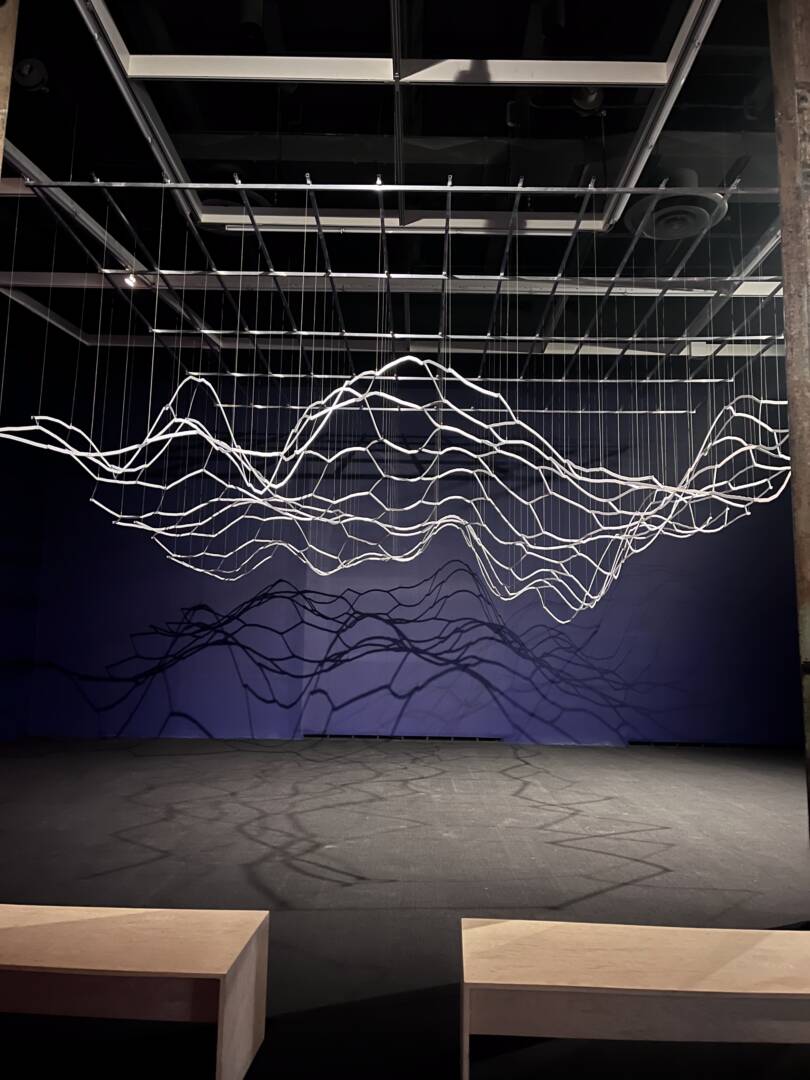
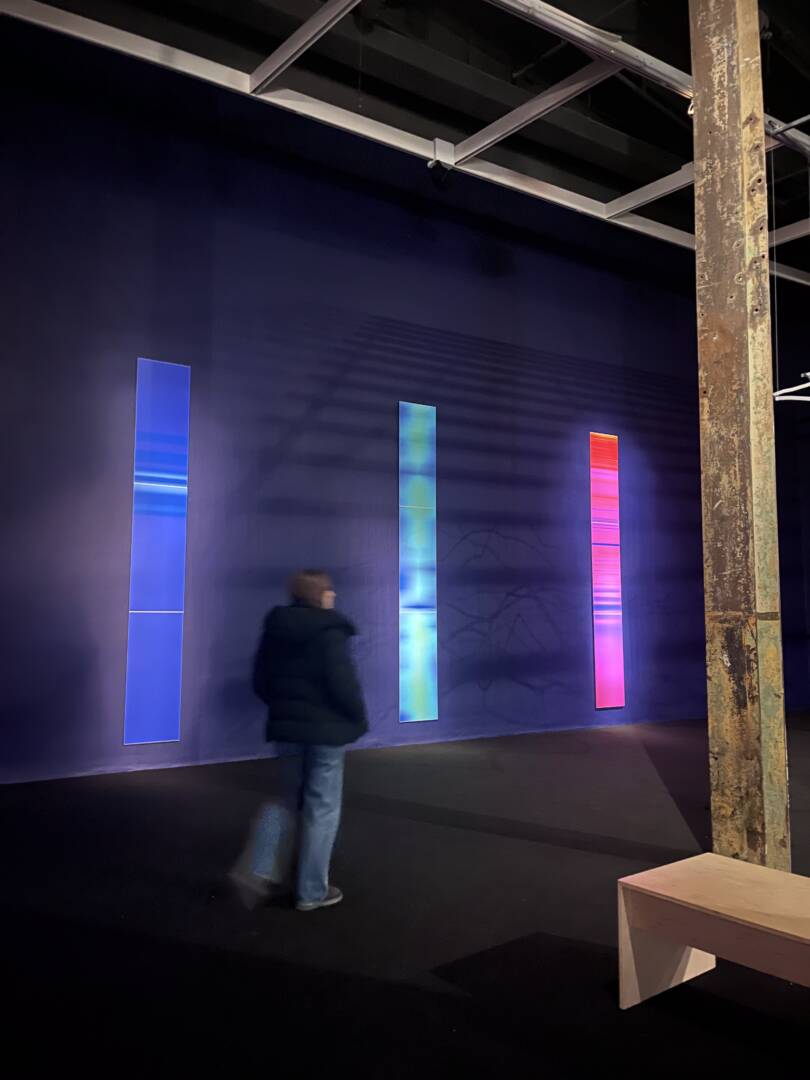
Video Art Project- Censor
One Shot: https://www.youtube.com/watch?v=_qQX-qZijMU
For all of our videos, we wanted to play with the idea of censoring. We did this through the use of banned books, using The Catcher in the Rye by J.D Salinger, and To Kill a Mockingbird by Harper Lee. For the one shot, we censored each other by reading the books aloud, and holding the books for each other, creating a further obstacle to reading and understanding the books.
Loop: https://www.youtube.com/watch?v=Q-U7NLzDppI
For the loop we wanted to play with physically censoring the words and phrases that we thought were “bad” on a given page of the book. I think its a nice way to visually see the censoring, and I like the idea of trying to read the book with the words left over but it makes little to no sense. We chose to frame this shot as a close up, so that the viewer could read the words we were blacking out and attempt to read the book as it is being censored.
Sequence: https://www.youtube.com/watch?v=7uJzVOC9ifQ
In the sequence, we wanted to play with different ways of physically destroying and therefore preventing the subject from reading the book. These things include putting on black paint and tape, ripping out pages or cutting them up, and pouring water on the pages. There is a sense of urgency in the person doing the censoring, mixed with the calm flip of the page from the reader which creates a nice juxtaposition.
Bridget Moser- My Crops are Dying but my Body Persists
In the piece by Bridget Moser entitled “My Crops are Dying but my Body Persists”, the artist uses various props to create a series of gestures. The items vary from hotdogs to fake nails, a plastic mouthpiece to a golden ballon animal statue and a plastic glove filled with beans to a suit printed with skinless muscles. A lot of the props are incredibly absurd and seemingly random, but there are some things that felt familiar, like “satisfying” videos online of a croc filled with shaving cream or various objects that feel like the kitschy, useless garbage you see at home stores.
At one point the artist slathers moisturizer on white bread, detergent on waffles and eats loonies with milk as cereal. This evoked quite a physical, visceral reaction for me, best stated by Charlene K. Lau in the art forum review as “I am perversely seduced and simultaneously disgusted”. Her usage of white bread not only slathered with expensive moisturizer but as pillows she cuddles on a couch represents whiteness and the privilege it affords. Her usage of music also plays into this, using “We Are Young”, described by Charlene K. Lau as an “anthem of youth entitlement, i.e., whiteness another way”.
Audio Art- A Change in Frequency
For my audio piece, I decided to manipulate classical music. First, by playing it through the pickups of a guitar, and then using guitar pedals to alter the pieces. The two classic pieces I chose are both by Ludwig van Beethoven, entitled “Für Elise” and “Symphony No.5” respectively. The guitar pedals I used included a WAH pedal (which alters the EQ and frequency of the sound), an overdrive pedal (to boost signal and give grit), a distortion pedal (more grit, aggressive tone),and a modulation pedal (which alters the sound waves and make them vibrate in different ways).
Open Studios
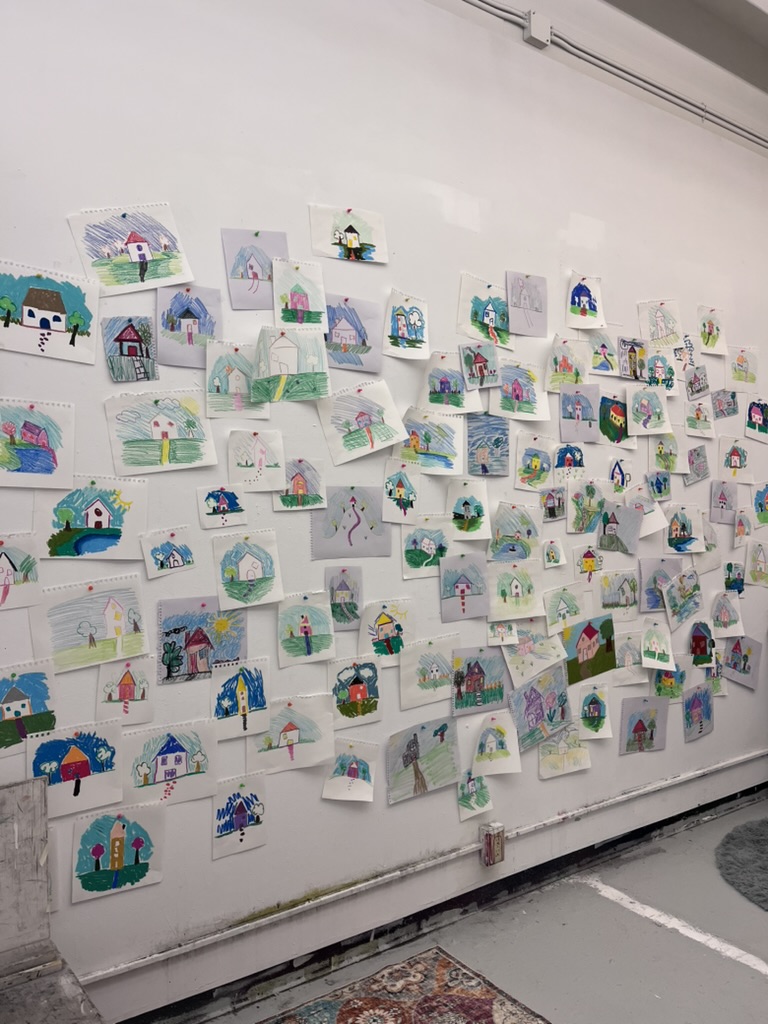
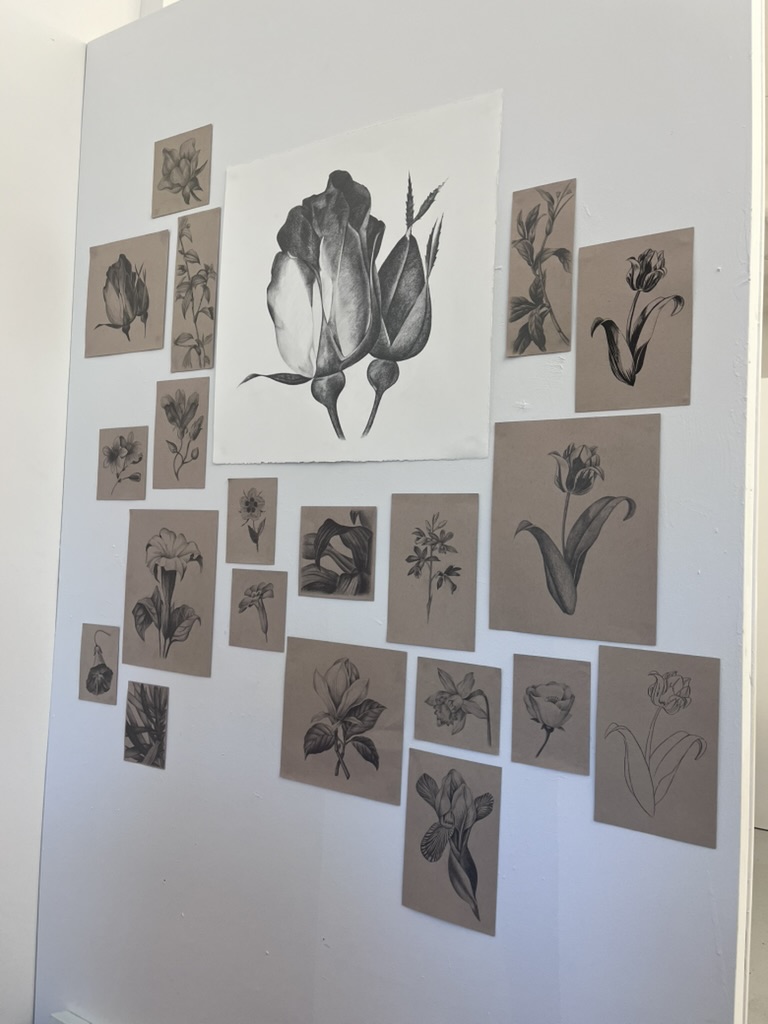
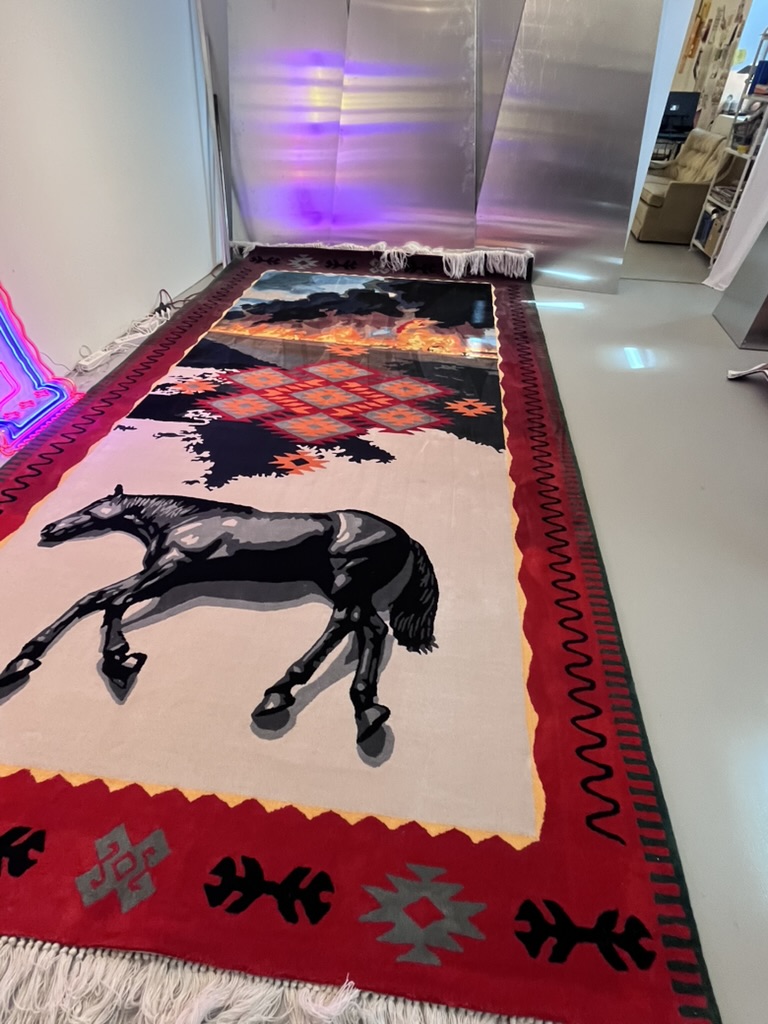
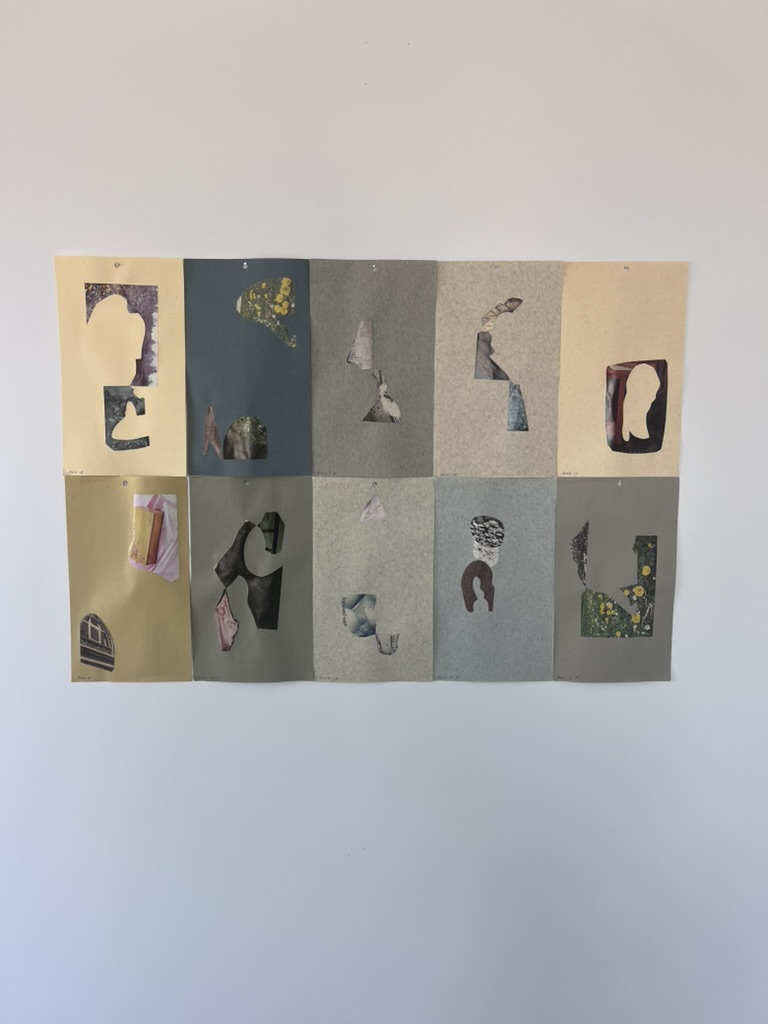
I had the opportunity to walk around the open studios on wednesday and I thought it was really cool! It was so interesting to be able to walk into the artists’ spaces and talk to them about their work. Everyone was really kind and excited to talk about their work, and it was lovely to hear it! I loved the variety of different styles that we saw, everything from hyper-realistic paintings and drawings to collage to carpets and sculptures. It was really cool to see the undergrads’ work and their studios, as I can picture myself being in one of those studios in my fourth year and I started to get really excited!
Conceptual Portrait- “Just a Small Selection: 40 Pictures of Flowers Taken By My Grandmother”
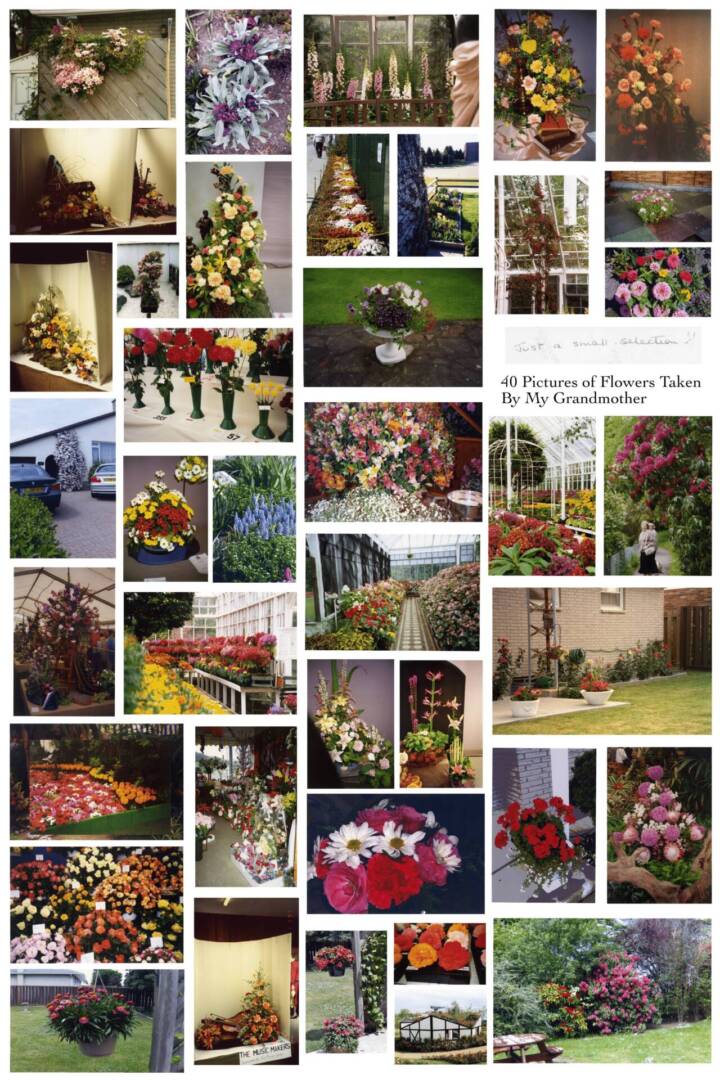
For my conceptual portrait I wanted to do a portrait of my grandma. She loved to take photos of everything, and when she passed away began to look through boxes and boxes of photos that she’d taken and collected, and I noticed a lot of images of flowers, which made a lot of sense since flowers were one of her favourite things. I loved the idea of representing her with flowers with images that she took herself, to see them through her own eyes. I collected the images of flowers, scanned them and arranged them into a poster size which I printed on 24×36 poster paper. The paper gave the images even more of a vintage look, which I really appreciated as it was on brand with the idea of it being a portrait of my grandmother, and made the images all look a bit more uniform.
Artist Button Project
For the button project I wanted to create something that was sort of a look inside of the wearer. My original idea was to do images of cells, but shortly after I realized that X-Ray images would read better. So I found X-ray images online of different parts of the body including the wrist, ribs, elbow, collarbone, shoulder, hip, knee, leg, arm and spine, intended to be worn on that spot on the body. I love the way that this acts as a look of what’s inside of the wearer. Upon discussion in class, I feel that this came across well, and I was really interested in some of the things my classmates had to say, specifically feeling a bit of discomfort in thinking of and seeing their skeletal system in that way, which I thought was really interesting and understandable.
